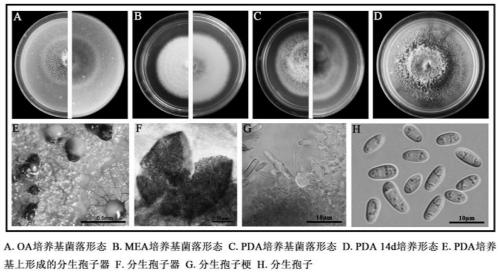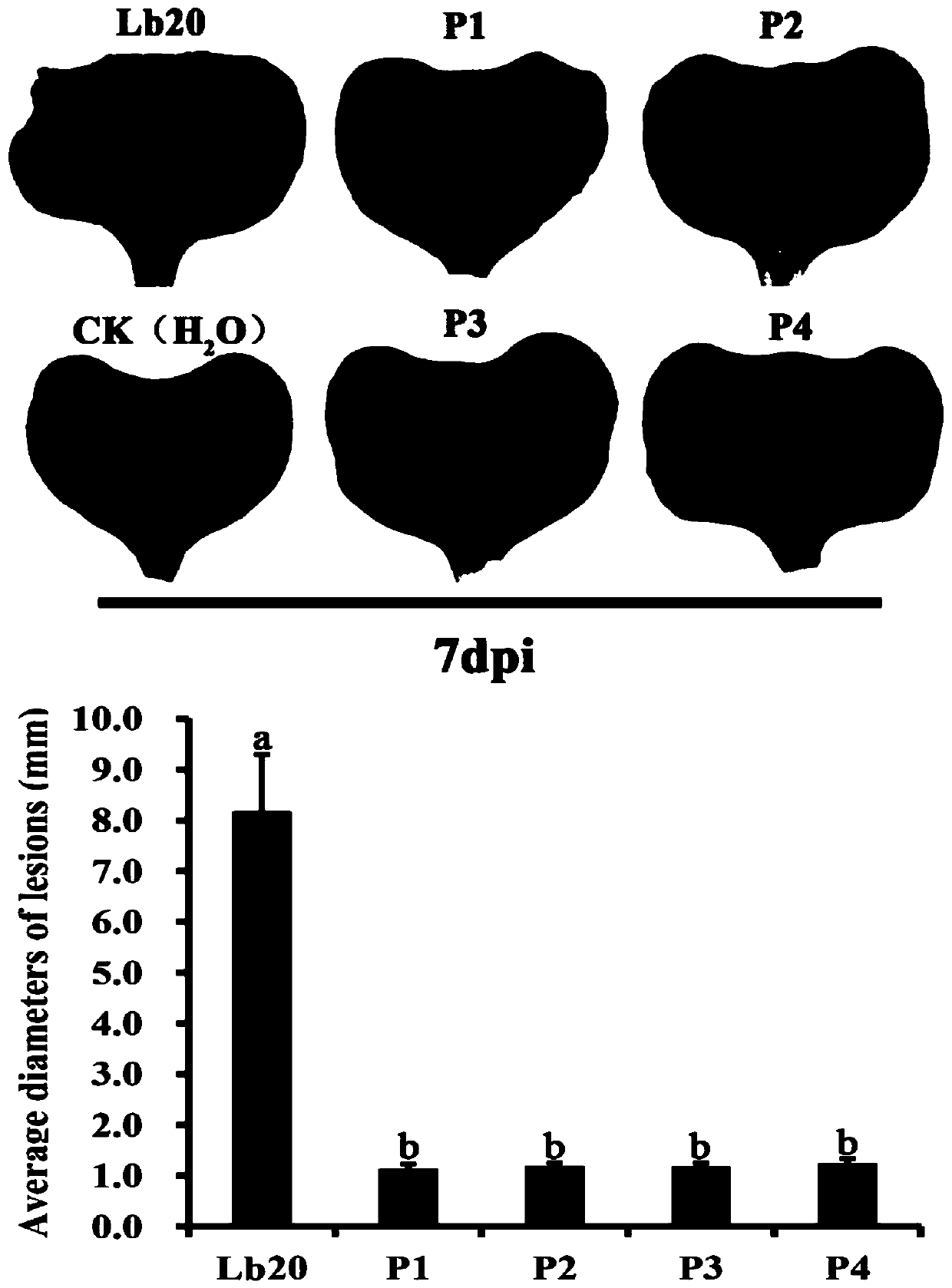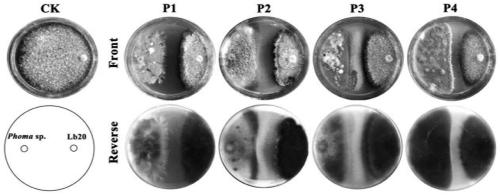Biocontrol Phoma macrostoma strain P2 and application thereof
A technology for Pythium stipitis and Pythium melon and fruit is applied in the field of Pythium giganta to achieve the effects of inhibiting the growth of pathogenic bacteria, strong resistance to high temperature and avoiding adverse effects
- Summary
- Abstract
- Description
- Claims
- Application Information
AI Technical Summary
Problems solved by technology
Method used
Image
Examples
Embodiment 1
[0040] Isolation, Identification and Biological Characteristic Analysis of P2 Strain of Phomoma coelococcus
[0041] 1. Isolation of strains and analysis of their biological characteristics
[0042] The applicant selected the sick and disabled body with typical symptoms from the rapeseed black shank samples collected in Yunxi County, Hubei Province, and cut the tissue block at the junction of the disease and health, with a size of about 0.5cm×0.5cm; with 75% ethanol , 5% sodium hypochlorite for 30s and 5min, respectively, and then washed continuously with sterile water for 3 times, then transferred to the center of the PDA medium plate containing 25% lactic acid, incubated at 22°C for 4 days, and finally grew out from the edge of the diseased tissue fungi were purified. In addition, four fungi (Phoma sp.) similar to the pathogenic bacteria of rapeseed blackleg were isolated from rapeseed blackleg samples in our laboratory, named P1, P2, P3, and P4. Through pathogenicity analy...
Embodiment 2
[0052] Purification and Fermentation of Phomatopoints macrocoelom P2
[0053] (1) Strain activation: Pick a piece of P2 strain slant stored in a 4°C refrigerator with a sterile inoculation needle, inoculate it on PDA medium, and culture it in a 22°C incubator for 3 days.
[0054] (2) Strain cultivation: the P2 strain cultured for 3 days in step (1) was transferred to fresh PDA medium, and cultured in a 22° C. incubator for 7 days.
[0055] (3) Fermentation: use a sterile puncher to punch several bacterial cakes at the edge of the colony of the P2 strain in step (2), inoculate 5 pieces of mycelium in each 100mL of PDB culture solution, shake and culture at 150rpm and 22°C for 3d and 6d respectively , 9d and 15d, after centrifugation at 6000rpm, the fermented product filtrates of different days were collected respectively for the following examples.
[0056] (4) Fermentation filtrate of Phomopsis macrocoelom P2: place the above filtrate of fermentation product of Phomopsis macr...
Embodiment 3
[0059] Preparation of Filtrate from Fermentation of Phomoma coelococcus P2 and Determination of Antifungal Substances
[0060] 1. The temporal dynamics of antifungal substances produced by the ferment filtrate of Phomoma coelom P2
[0061] The fermented product filtrates were collected on the 3d, 6d, 9d, 12d and 15d of the shaking culture of the P2 strain, and the pH value was measured, and the dry weight of the obtained mycelia was weighed after drying (Table 1). After the fermentation filtrate is filtered by a bacteria filter with a pore size of 0.22 μm, in the ratio of 10% (v / v) (in the present invention, this percentage refers to the P2 fermentation product filtrate: culture medium is 1:9, volume ratio ) was added to the PDA medium and mixed evenly, and the virus-infected plate was obtained by inverting the plate, and 10% (v / v) PDB solution was added as a negative control. Sclerotinia sclerotiorum (Sclerotinia sclerotiorum), Botrytis cinerea (Botrytis cinerea), Rhizoctoni...
PUM
| Property | Measurement | Unit |
|---|---|---|
| diameter | aaaaa | aaaaa |
| diameter | aaaaa | aaaaa |
| diameter | aaaaa | aaaaa |
Abstract
Description
Claims
Application Information
 Login to View More
Login to View More - R&D
- Intellectual Property
- Life Sciences
- Materials
- Tech Scout
- Unparalleled Data Quality
- Higher Quality Content
- 60% Fewer Hallucinations
Browse by: Latest US Patents, China's latest patents, Technical Efficacy Thesaurus, Application Domain, Technology Topic, Popular Technical Reports.
© 2025 PatSnap. All rights reserved.Legal|Privacy policy|Modern Slavery Act Transparency Statement|Sitemap|About US| Contact US: help@patsnap.com



